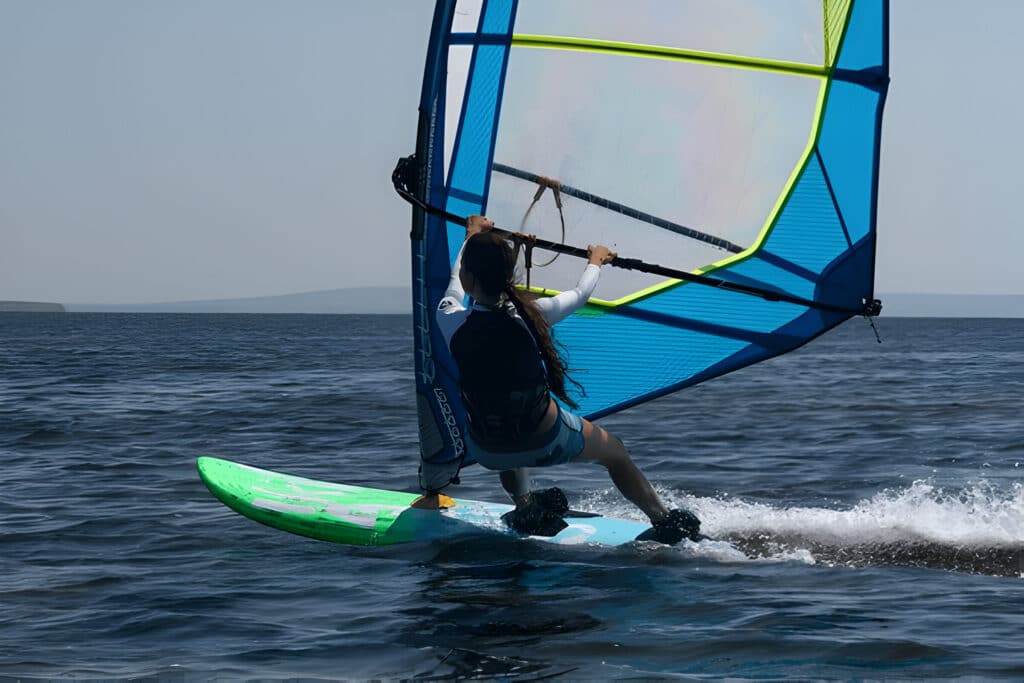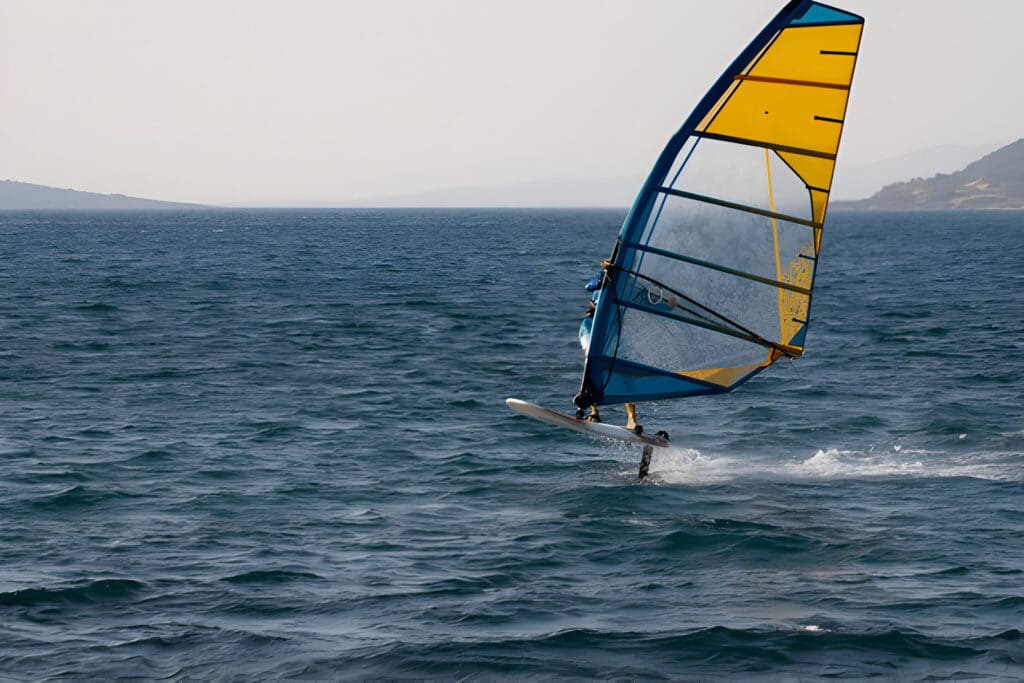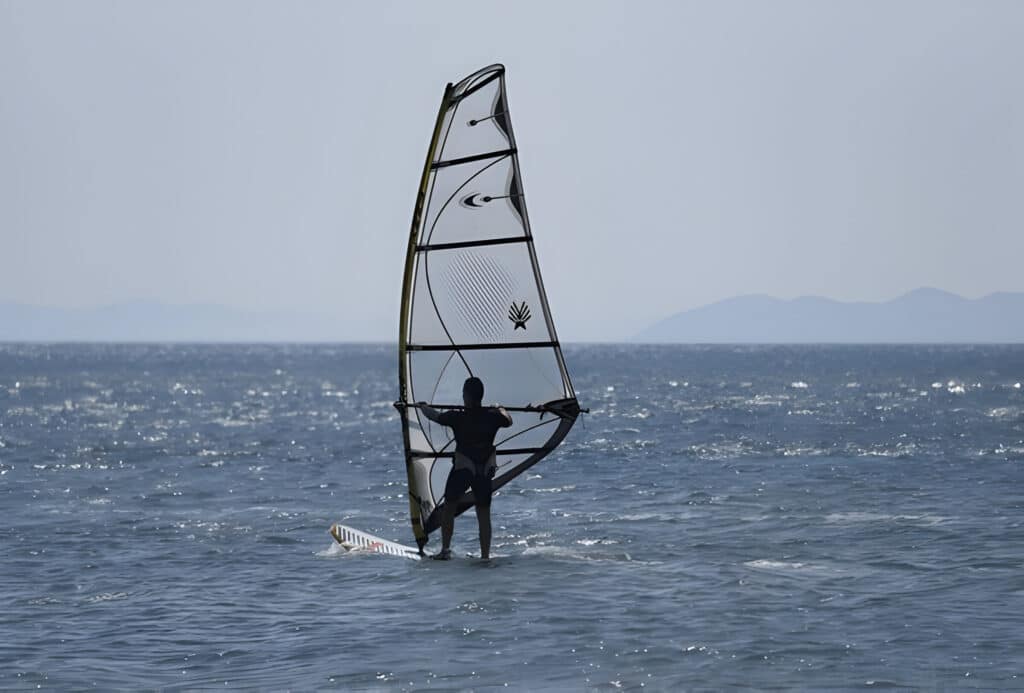Windsurfing, once a thrilling and popular water sport, has seen a significant decline in recent years. This decrease in popularity can be attributed to several key factors that have made the sport less accessible and appealing to casual participants.
The reliance on strong winds, expensive and complex gear, and the sport’s fickle nature have all contributed to its waning appeal. Additionally, the rise of alternative water sports like kitesurfing, which offers similar thrills with a lower cost and learning curve, has further impacted windsurfing’s popularity.
In this article, we’ll explore the reasons behind windsurfing’s decline.

Made Windsurfing Reliant on Strong Winds, Alienating Casual Participants
The evolution of windsurfing gear has significantly impacted the sport’s popularity, particularly in how it has become increasingly dependent on strong winds. This shift has inadvertently alienated casual participants and beginners, contributing to the decline in windsurfing’s mainstream appeal.
Modern boards and sails have been optimized for high-wind performance, catering to more advanced riders seeking extreme thrills. While these dynamic boards offer immense power and speed in suitable conditions, they have made the sport less accessible to newcomers and those seeking a more relaxed experience.
Gear Became Expensive and Less User-Friendly
In the early days of windsurfing, a basic board design and a single sail could suffice for most conditions. However, as the sport progressed, equipment became more specialized. Modern boards and sails are now designed for specific wind strengths and water conditions, requiring riders to own multiple pieces of equipment for optimal performance. This has led to a significant increase in the overall cost of windsurfing gear.
For example, a high-wind board designed for strong winds and choppy waters can cost upwards of $2,000, while a set of sails for various wind conditions can easily exceed $3,000 (Source: Windsurf Magazine, 2022). This substantial investment in equipment has made windsurfing less accessible to newcomers and casual enthusiasts, especially when compared to other water sports like stand-up paddleboarding or kayaking.

Fickle and Conditions-Dependent Nature of Windsurfing
Unlike other water sports, windsurfing requires a specific combination of wind and water conditions to be viable, making it challenging for enthusiasts to consistently practice and improve their skills.
Windsurfing typically requires wind speeds between 10-25 knots for optimal performance, with stronger winds necessary for more advanced maneuvers. This dependence on wind strength often leads to frustration among participants, especially in regions with inconsistent wind patterns.
For instance, a study conducted by the National Oceanic and Atmospheric Administration (NOAA) found that only 30% of days along the East Coast of the United States provide suitable wind conditions for windsurfing throughout the year. This limited availability of appropriate conditions can significantly reduce the return on leisure time for enthusiasts, making it difficult to justify the investment in windsurfing gear and equipment.
The fickle nature of windsurfing conditions also affects the sport’s appeal as a family activity or social pastime. Unlike mountain biking or other enjoyable activities that can be planned with relative certainty, windsurfing outings often require last-minute decisions based on weather forecasts. This unpredictability can be particularly challenging for those with time constraints or busy schedules.
Kite Surf Offered Similar Thrills with Less Cost and Learning Curve
One of the primary factors that made kitesurfing more attractive was its lower entry cost compared to windsurfing. While windsurfing gear often required a substantial initial investment, kitesurfing equipment was generally more affordable.
The learning curve for kitesurfing also proved to be less steep than that of windsurfing. Beginners could typically achieve basic riding skills within a couple of weeks of consistent practice, whereas mastering windsurfing often took longer due to the complex sail handling and body positioning required.
Kitesurfing also offered greater versatility in terms of wind conditions. While windsurfing relied heavily on strong winds, especially for beginners, kitesurfing could be enjoyed in a wider range of wind speeds.
The portability of kitesurfing gear was another significant advantage. A complete kitesurfing setup, including the kite, board, and harness, could easily fit into a large backpack or small car trunk. In contrast, windsurfing equipment, particularly the board and sail, required more storage space and often necessitated a roof rack for transportation.

Too Hard to Pick up the Sail up Out of the Water
One of the significant challenges that contributed to the decline in windsurfing’s popularity is the difficulty of uphauling the sail, particularly for beginners and intermediate windsurfers. This process, known as the “painful uphauling stage,” can be physically demanding and frustrating for many participants.
The uphauling technique involves lifting the sail out of the water and into an upright position, which requires a combination of strength, balance, and proper technique. For beginners using entry-level windsurfing gear, this task can be especially daunting due to the weight of the equipment and the instability of the windsurf board in water.
Conclusion
Windsurfing’s decline in popularity can be attributed to a combination of factors that have made it less accessible and appealing to casual enthusiasts. The sport’s reliance on strong winds, expensive and complex gear, and the challenge of mastering techniques like lifting the sail out of the water have all contributed to its waning appeal. Additionally, the rise of kitesurfing as a more cost-effective and easier-to-learn alternative has further impacted windsurfing’s popularity.
While dedicated windsurfers still enjoy the unique thrill of harnessing wind and waves, the sport’s fickle nature and high barriers to entry have led many potential participants to seek out other water activities.

